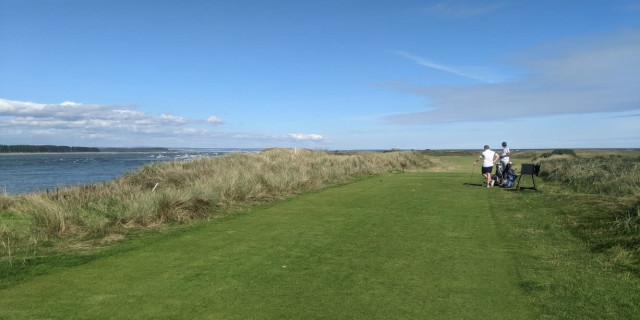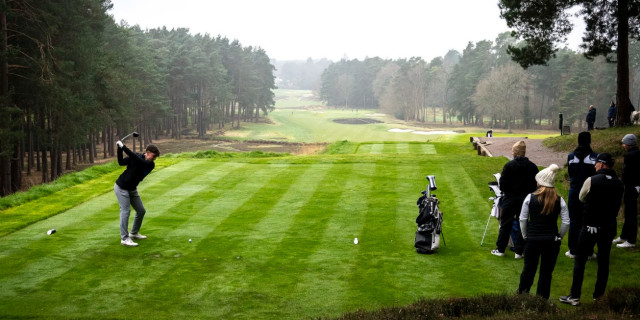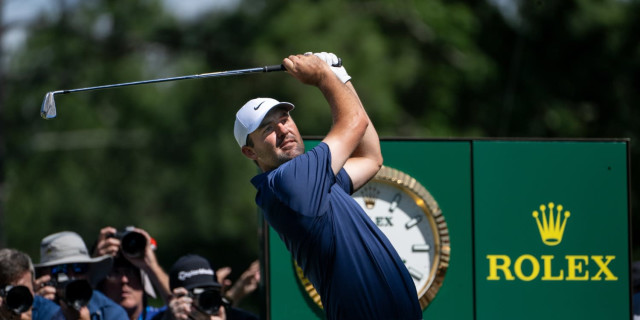
What Makes New Golfers Different
GOLF enjoyed an unprecedented boom in 2020 in the most trying and difficult of circumstances. Countless people have returned to the game for the first time in years, while others took it up for the first time after weeks in lockdown.
So how do these new golfers differ from traditional and long-standing club members?
For a start, they are far more likely to play the game simply for the enjoyment of it. Most club members regularly play in competitions with the express purpose of trying to reduce their handicaps. But many of the new generation of golfers turned to the sport in May because they were looking for something new to do. Many had been furloughed by their employers and had time on their hands. Sadly, many others had been made redundant.
It is unlikely that huge numbers of these golfers would have gone out and spent a fortune buying new clubs, opting instead for either second-hand or budget sets until they made up their minds whether golf really was for them. But the industry received a boost in all sorts of other ways, most especially through golf-club memberships. And they all had to buy golf balls, tees, gloves, shoes etc.
We have already recorded the benefits of playing golf on physical and mental well-being and for the new generation of players this may be the most important thing of all, along with the simple enjoyment of being out in the fresh air with friends and family.
One thing that seems to be beyond dispute is that club golf in the UK seems to have a bright future. The proof of the pudding will come when clubs begin to send out their membership renewal reminders in the coming months - it is impossible to say whether all those new members will renew, but there is no reason to believe that they will not.
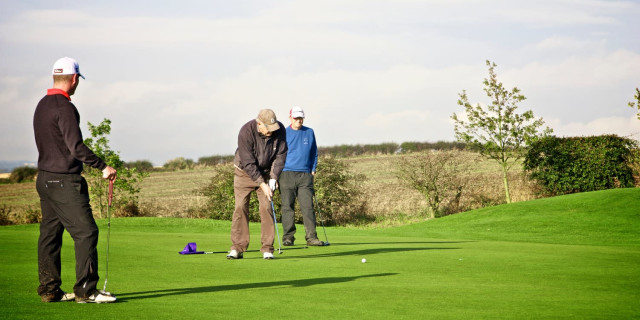
Survey Feedback October 2020
As you will know, here at Golfshake we regularly conduct surveys in which we actively seek views about the state of the game. The most recent one was conducted during the second Covid lockdown in England and saw more than 1,600 of you responding. It is difficult to get an accurate picture, because for reasons that we don’t quite understand, new golfers seem reluctant to fill in our surveys. And the latest one was conducted at a time of year when many golfers actually go into winter hibernation. Despite that, most of you who responded to our November survey do remain positive about our sport.
The good news is that 76% of new golfers, those playing for less than two years, who did respond said they planned to continue during the winter months, with 21% stating that it depended on the weather. No real surprise there. However, this compared to 81% of established golfers saying they will play during the winter unless course closures prevent them from doing so.
It is also highly encouraging to learn that 62% of established golfers intend to practice at the driving range during the winter, while 55% plan to practice at their courses, 30% at home and 27% by way of lessons with a pro/coach. In contrast, a staggering 87% of new golfers will be heading for the range, with 69% going to practice at the course, 36% at home and and an impressive 47% via lessons.
New golfers also told us that they will carry on playing in 2021. On top of that, 21% of new golfers have indicated that they will be looking to join clubs - this compares to just 7% of those who have been enjoying the game for more than two years and are not club members and have no intention of changing that. The newcomers are also far more likely to be investing in new clubs as the golf bug bites.
5 Year Survey Analysis - How New Golfers Differ
Those who are new to the game of golf create exciting opportunities for golf clubs and golf companies. Those who are coming to the game for the first time differ to established golfers. Here at Golfshake this got us thinking further. We decided to go back through five years of surveys to see if there were any trends among newcomers and those who have been playing for less than two years to look at how they differ to established golfers. What follows is a snapshot of the data and common themes from the Golfshake survey audience.
Audience Demographic
Firstly, our audience is always shifting based on what we provide and how the tech landscape changes in terms of how consumers consume golf online, so we can never provide an 100% accurate reflection. Most golfers are over a certain age and Golfshake will often sway to a slightly older demographic of 40-plus, although that is likely to change as the surge of new players is reducing the average age of the club golfer.
Golfers who had played for less than a year were 64% likely to be aged 19-50 with this number dropping to 55% for golfers aged 19-50 who had played for up to two years. This may highlight the Golfshake audience rather than anything specific but could suggest that golfers are easily lost and give up once they make it to year two. One of the big problems is that those who have given up the game do not tend to take part in surveys, so it is difficult to understand precisely why they have walked away from the game. We can speculate of course - time and cost seem to be two of the most obvious reasons.
Additionally, our audience is largely swayed to golfers in the South of England then followed by the Midlands and North given the population density and location of golf courses. We also struggle to engage with women, with only 4% of respondents being female.
Club Member Status
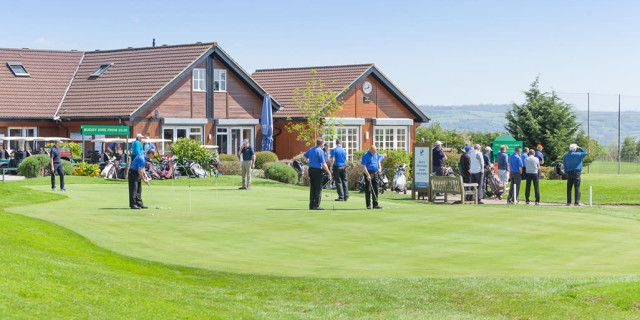
The overall Golfshake survey audience is largely split 50/50 in terms of club golfers and non-club golfers, or nomadic golfers.
On average those who have started playing within the last year are 60-62% likely to be non-members with 38-43% of that number considering joining a club. Golfers who have played for one-two years are 50-55% likely to be non-members, with 26-33% of those considering joining a club. From previous data this consideration to join a club, drops considerably with more established non-club members. These are people who do not want to be tied to playing at one course and like to have some choice about where they play.
Aanalysing the data from the survey carried out in 2020 after the UK lockdown highlighted quite a major shift, with an impressive 68% of those starting within the past year having joined clubs.
Playing Habits
Those who started playing in the past two years play slightly less than more established golfers. They will play fewer golf courses but are more likely to play nine-hole golf.
For those with less than a year's time playing golf they will be more seasonal, although less so in their second year of golf. They are also less likely to travel as far to play away from their home/local course.
A staggering 95% of new golfers want to play more but the biggest issue is focused around time and the impact of the game of things such as work, family and other commitments. They are also more likely to be members of gyms and still participate in team sports.
But there is evidence that that the golf bug really exists - and that when it bites, it bites hard. By year two of their golfing journey, 86% will have played more that year than in the previous 12 months. Of those not playing more, 25% say that it is because of a lack of playing partners, which may highlight the fact that golf clubs still have work to do when integrating new members. Established golfers who play less are more likely to point to injury as the reason for doing so.
New golfers to the game are more likely to have smaller golf circles and are less likely to be a member of a golf society, but they are more likely to play regardless of the weather. They will also spend more time at the driving range but are reluctant to to go to see a professional and have lessons.
Golf Purchasing & Equipment

Golfers who have played for less than two years are more likely to make greater use of digital content when it comes to buying decisions. Digital content will be through the use of golf websites and reviews as well as YouTube. It is interesting to note that these golfers are less likely to turn to golf magazines. In their second year, possibly as their social circle grows, they start to also utilise the experience and feedback from their golfing peers as well as a golf pro, both of which are utilised much more for established golfers.
In the first year of playing, new golfers will have a fairly even split in terms of purchasing golf equipment and clothing online or via a retail store, but by years 1-2 this will see a slight shift towards utilising a retail store. Established golfers are more likely to use retail stores but will also utilise golf pros. New golfers are more likely to buy their golf bags online, while, established players will go to a retail store.
It should come as no surprise to learn that new golfers will buy golf balls on a more frequent basis. This should come as no surprise as they have higher handicaps.
By year two, 77% of golfers will have spent more on equipment than the previous year, highlighting their increased love of and commitment to the game.
Around 73% of golfers who have been playing for less than a year have a trolley but it is less likely to be branded model than among established players - 85% of golfers who have played for one-two years have trolleys and are far more likely to have a branded one.
An indication of the way the game is changing comes with figures relating to GPS. It may come as a surprise to learn that 35-50% of golfers playing less than a year have some form of GPS device, although a large percentage of these are utilising a smartphone-based GPS app. This figure rises to 50-60% of golfers who have played one-two years but, again, many indicated that these were app based GPS. This compares to around 65% owning a GPS for the overall survey data.
Laser usage is considerably lower with 2% of the less than a year and 8% of those playing one-two years and this compares to 17% of the more established golfer market who have completed the Golfshake surveys.
Established golfers will buy clubs based on performance and custom fit whereas the newer golfers focus on performance but cost also factors in alongside getting clubs as gifts or secondhand. Golfers moving from their first year to having played one-two years also show a shift down in having clubs based on gifts potentially highlighting equipment purchases. This may be further backed up by only 22% of golfers playing for less than one year having more than one set compared with 39% for those playing one-two years and a much higher 48% for those playing for more than two years.
Only 21-25% of golfers playing for less than one year will have had a custom fitting, although 84% say they would consider it in the future. This number increases to 30-40% having had a custom fit when they have played for one-two years.
Looking to Improve
New golfers are less likely to have visited a golf pro and had lessons. Additionally, when asked about areas they would like to improve the clear winner for those playing one-two years is the driver and getting the ball off the tee, followed by irons/approach and then chipping or putting.
For more established golfers it is a more even balance with three key areas being driver, irons and chipping.
How Did the Pandemic Affect Golfers?
Unsurprisingly, those starting golf this year and thus those with limited equipment were more likely to have been out and spent money on clubs, balls and apparel. When asked if the pandemic had impacted on their spending on golf this year 78% said it had no effect. This rose to 90% for those playing for one-two years and of this category only 1.5% said they had spent less on golf equipment, which compares to around 10% of the overall response.
Overall, when asked if they had spent more or less than normal, it emerged that 21% had spent more, with 35% spending less and the other 44% spending about the same. For golfers playing for one-two years they potentially still needed to buy golf items so the data shifted, with 33% spending more,11% spending less and 56% spending a similar amount.
So whilst we might not have all the answers the above may provide some insights into how new golfers differ and how they engage with the game and how their journey into golf develops over the years.
Finally, having conducted this research it got us asking questions about how golfers get into the game in the first place. We would love your thoughts in our latest survey which can be completed here - How You Got Into Golf
For more details and data insight, see our Golfshake Industry Insider Series...
About the author

Derek Clements is a seasoned sports journalist and regular Golfshake contributor, specialising in tour coverage, opinion pieces, and feature writing. With a long career in national newspapers and golf media, he has reported on the game across Europe, the United States and Australia. A passionate golfer, he has played and reviewed numerous renowned courses, with personal favourites including Pebble Beach, Kingsbarns, Aldeburgh, Old Thorns and the K Club. His love of the game informs his thoughtful commentary on both professional golf and the wider golfing community.
Tags: Survey Memberships industry insider Golf Clubs daily picks






